COVID-19’s Initial Impact on Food Supply Chains, Rural Migrants, and Poverty in the PRC
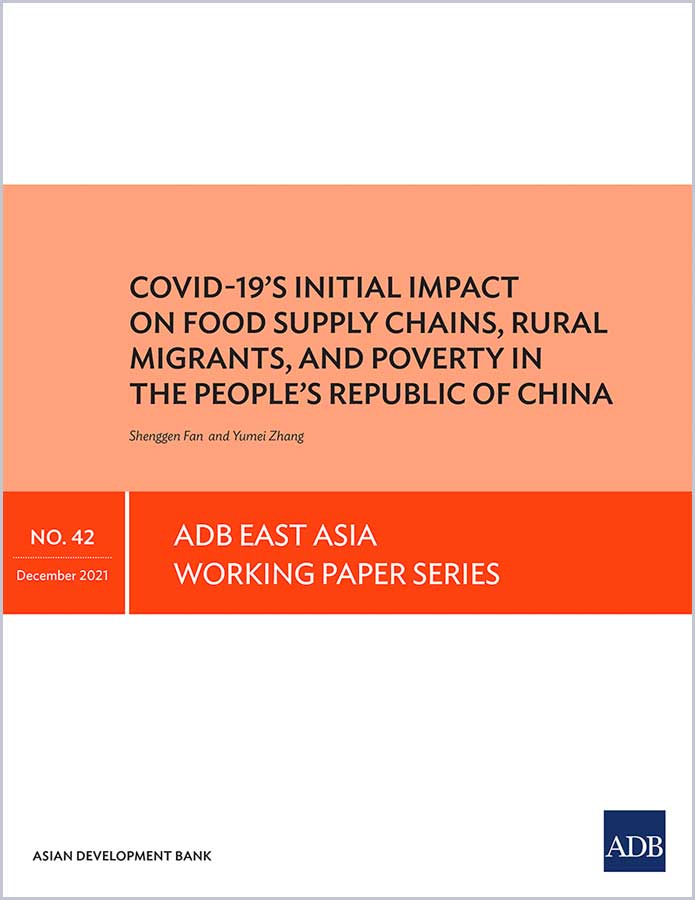

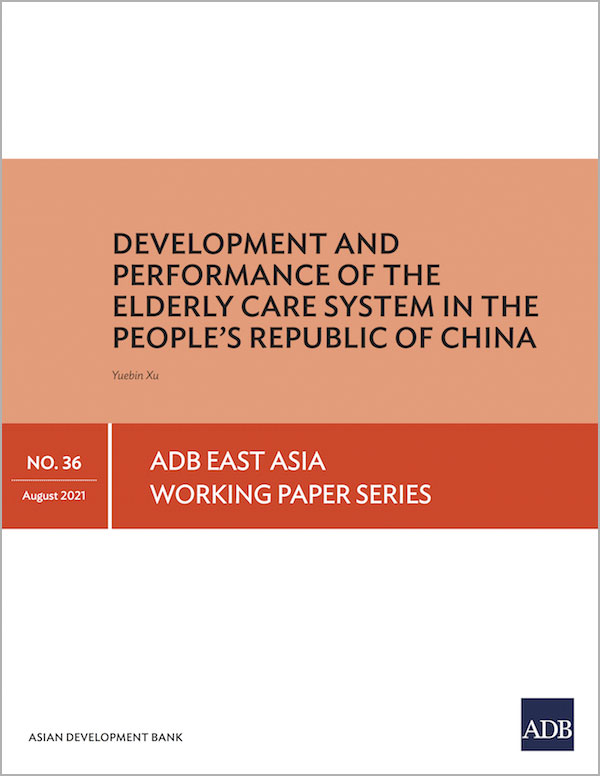
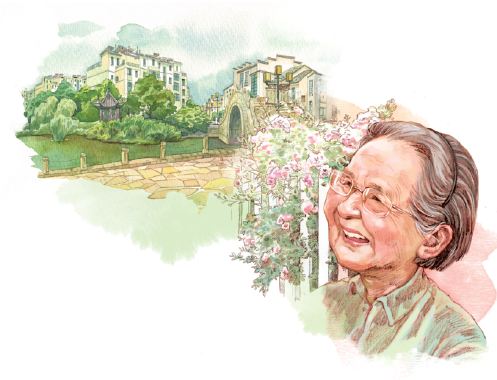

Rethinking urban design necessary to ensure sustainable, healthy and age-friendly urban communities.
The last 40 years have seen soaring urbanization in the PRC, as a result of which 60 percent of its population now lives in urban areas. the PRC’s society is also aging rapidly. As these two trends are ongoing, the PRC needs to make its cities more livable, healthy and age-friendly, as well as environmentally sustainable and socially inclusive.
Contemporary urban life in the PRC and elsewhere has seen increased individuality with reduced social cohesion, smaller families, fewer children and many people living alone. This requires reconsideration and improvement of the social security and pension systems and health and elderly care services. But city design and urban management also have roles to play in addressing these issues by promoting social cohesion and restoring community life.
For example, the PRC could promote healthier and more age-friendly cities with cohesive neighborhoods if it rethinks and rehabilitates its system of compounds. The rehabilitation of urban compounds in the PRC will need to be a comprehensive and participatory effort to promote improved health, safety, resilience and an active community life.
This means reducing the number of fences and gates and introducing new pathways for pedestrians and bicycles through compounds to create a finer mesh of pedestrian and bicycle networks. In the process, walking distances would be significantly shortened. Also, new small buildings with two to four stories can be introduced, as careful in-fill development between residential high-rise buildings, with community spaces, small shops and other uses.
All these will create a more humane environment amid the typical wide roads and tall buildings, as well as create well-defined spaces that are either public or semi-public for local residents, or private for individual households.
If Chinese cities and urban spaces can be made less dependent on cars, this would bring healthier lifestyles to the residents and enable more interaction within communities. That would be good news for everybody, especially the elderly and children.
One out of every five people will be aged over 60 in the PRC by 2030, heralding a “super-aged society”; and it will rise to more than one in three by 2050. Many of these elderly will age further, becoming part of an emerging four-generation urban society. It is a trend observed not only in the PRC but in many other countries, especially high-income ones. The pressures of an aging society and inaccessible urban environments affect women disproportionally due to their longer life expectancy and care duties.
Recognizing this, urban planners could consider a number of internationally recognized best practices for sustainable urban development. These include the “compact city” concept, in which an urban area is organized in clusters of pedestrian-friendly, high-density mixed-use centers within walking distance of public transport stations, inclusive of green open space. This is known as transit-oriented development.
Other practices are low-carbon development, to which compact cities contribute, and climate-resilient urban development. In this, green infrastructure and parks are combined with gray infrastructure to provide flood and drought risk management, air quality and microclimate improvements, habitat for a diversity of plant and animal species, and green amenities for urban residents.
The overall objective must be to make cities liveable and socially inclusive. This includes not only environmentally sustainable planning but ensuring access to affordable and social housing and to public services, education, health and attractive jobs. Integrating health and aging into sustainable urban environment improvement and city planning and urban design will bring together many agencies and specialists to work across sectors and disciplines.
While these good principles create many benefits, it is important to adapt health-and age-specific features into cities and new urban developments, buildings, infrastructure and open spaces. This will be vital for urban competitiveness and will influence individuals’ and companies’ decisions to remain in a certain city or relocate to another.
Making cities healthier and more friendly to the elderly and children requires well-planned urban green spaces, safe, clean and walkable urban environments, and accessible services and facilities for these groups. Women who tend to live longer than men will in particular benefit from these improvements. All of these will help ease public health management in an era when infectious diseases such as the COVID-19 pandemic, noncommunicable diseases and the challenges of aging populations are converging.
Cities also need to combine an age-friendly public transport system with safe and convenient sidewalks and pathways, bicycle parking, parks, public spaces and public service facilities. This effort needs to be integrated with universal urban design to ensure that public spaces, sidewalks, parks, and buildings are accessible for people of all ages and the physically impaired.
Prioritizing health and age-inclusion will not only become the driver and platform for action to address the many challenges of the emerging four-generation cities, but is also a great opportunity to transform urban community life for the better.
Neighborhoods, if designed well, would encourage all residents to contribute to the care of children and the elderly, just by being part of a highly interactive local community.
Urban rehabilitation and retrofitting would reduce carbon emissions as people walk more, and contribute to the country’s objective of peaking carbon emissions before 2030 and reaching carbon neutrality before 2060.
If these principles of urban rehabilitation are applied, local social cohesion and wellbeing in the PRC’s cities will also improve. Urban health and age-inclusive designs will also contribute to the Healthy the PRC 2030 Plan and more generally promote well-being and high-quality development, an overarching objective of the 14th Five-Year Plan (2021-25).

Senior Urban Development Specialist, East Asia Regional Department, ADB
This Op-Ed is reproduced from China Daily.


The population in the PRC is aging rapidly. The proportion of people aged 60 or above is expected to increase to 35 percent by 2050, turning the population into one of the oldest in the world. While aging poses great challenges, if managed well, these can be overcome to create opportunities.
Reforms for fostering labor mobility and upgrading human capital will reduce the labor shortages stemming from an aging population. Greater public and private investments to strengthen elderly care services and facilities will create employment opportunities and improve people’s well-being.
Benefits of greater labor mobility
Mobility restrictions in the PRC-the household registration system (hukou) and inability of migrants to claim social security benefits away from home-discourage transfers from provinces where there is a surplus of labor to ones where there is a deficit. Re-allocating labor from low- to high-productivity sectors could add several percentage points to GDP growth. And accelerating the ongoing relaxation of the hukou policy and social security reforms for migrant workers to gain access to social services and benefits in their place of residency will remove such institutional mobility barriers.
The benefits of greater mobility can be maximized through increased investments in human capital. Gross enrollment rate in the PRC’s senior high schools and the percentage of population with tertiary education in scientific and technical subjects need to increase. The growing digitalization of the economy adds pressure to the task.
While new learning methods should encourage lifelong learning, creativity, innovation, and problem-solving skills, incentives must be introduced for companies to provide on-the-job training, and initiatives to re-train workers whose skills are obsolete to prolong their participation in the labor force.
Increasing female participation in the labor market will also help maintain the labor supply. Although gender gaps in education have largely closed, female workforce participation has declined over the past decade, and women continue to bear a disproportionate responsibility for unpaid care work at home and remain under-represented in scientific research and high-technology industries and services. Policies for equal employment opportunities, increased maternity leave, improved support for childcare, elderly care, and single mothers, are essential to attract and maintain women in the labor force.
Better services and care for the elderly
Under the PRC’s 14th Five-Year Plan (2021-25), development of an efficient long-term care (LTC) system is a government priority. Insufficient elderly care facilities result in unnecessary admissions in acute care hospitals and are a waste of healthcare resources. Improved home- and community-based LTC can address this issue. Incentives to develop home- and community-based services, such as home help, home care, and home nursing services, and center-based services to support the elderly are critical to meet the”90-7-3 older persons care pattern “launched during the 12th Five-Year Plan (2011-15) period in which 90 percent of the elderly population should receive home-based care, 7 percent community-based care, and 3 percent institutional care.
More affordable elderly residential care for lower-income households that need assistance is part of the solution. These facilities can be funded by a mix of government support, individual pension contributions, and private sector involvement. This approach is emerging in the PRC but needs to be strengthened. These efforts will benefit from a shift in the role of the government from supplier to regulator for the provision of LTC. Examples of government tasks include setting policies and standards, subsidizing people who cannot afford the private facilities, and incentivizing private sector participation, which can engage in effective models of public-private partnerships.
Incentives and policies need to be improved
At the same time, incentives and policies to retain and train LTC givers must improve. Professions crucial to a well-functioning elderly care system, including nurses, physiotherapists, occupational therapists, nutritionists, medical specialists (that is, neurologists, specialists in geriatrics), social workers, service providers, and managers must expand. The number of professionals in paramedical, medical, social work and elderly care management should also increase, as those will result in better care and improved services for the elderly, as well as significant employment opportunities.
Addressing the needs of an aging society is costly. Public healthcare expenditure in the PRC stands at 2.9 percent of GDP compared with the 6.5 percent average in the Organisation for Economic Co-operation and Development countries, where LTC alone amounts to 1.7 percent of GDP. the PRC has made significant progress in extending health insurance coverage universally, but out-of-pocket payments still account for about half of the total health expenditure, exacerbating the vulnerability of lower-income households. Expanding health insurance coverage, reducing co-insurance rates, and introducing ceilings on maximum out-of-pocket payments are reforms that have proven effective in other countries.
Increased funding should not threaten fiscal sustainability. A more progressive taxation system, the further liberalization of energy and resource prices, and the introduction of environmental and property taxes would increase social spending without straining public finances. Policy reforms, too, can help. Affordable social services, higher pensions, and support to women through subsidies for childcare, baby bonuses, child grants, flexible hours, or part-time work, are key to lift fertility rates mitigating the impacts of an aging society.
While gradual increases in retirement age will strengthen labor supply and support the sustainability of the pension system, which is crucial for the success of a multigenerational workforce, age-friendly policies, such as more flexible work options, retraining, re-skilling, and age-friendly workplaces are important during the transition. Finally, the sustainability of the pension system is critical in an aging society. For that, the introduction of voluntary private pension funds, currently piloted in Zhejiang and Chongqing, needs to progress faster.

Country Director, PRC Resident Mission, ADB
This Op-Ed is reproduced from China Daily.
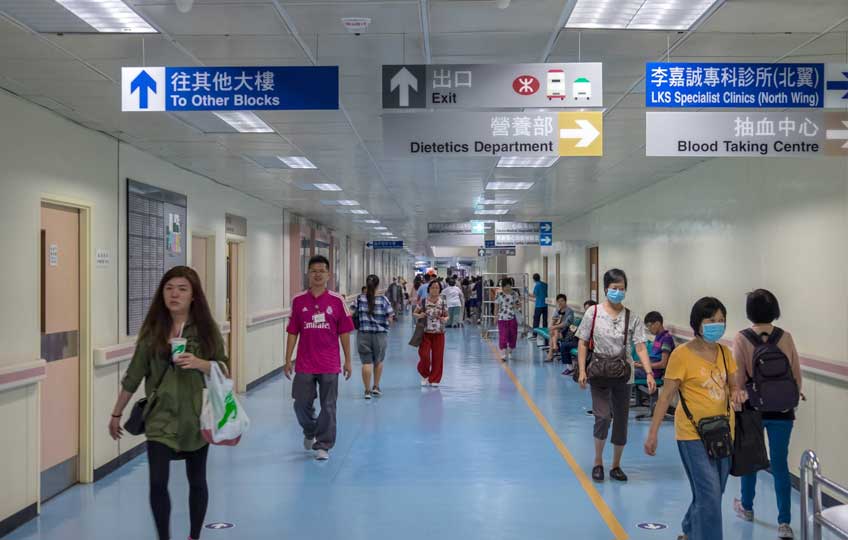
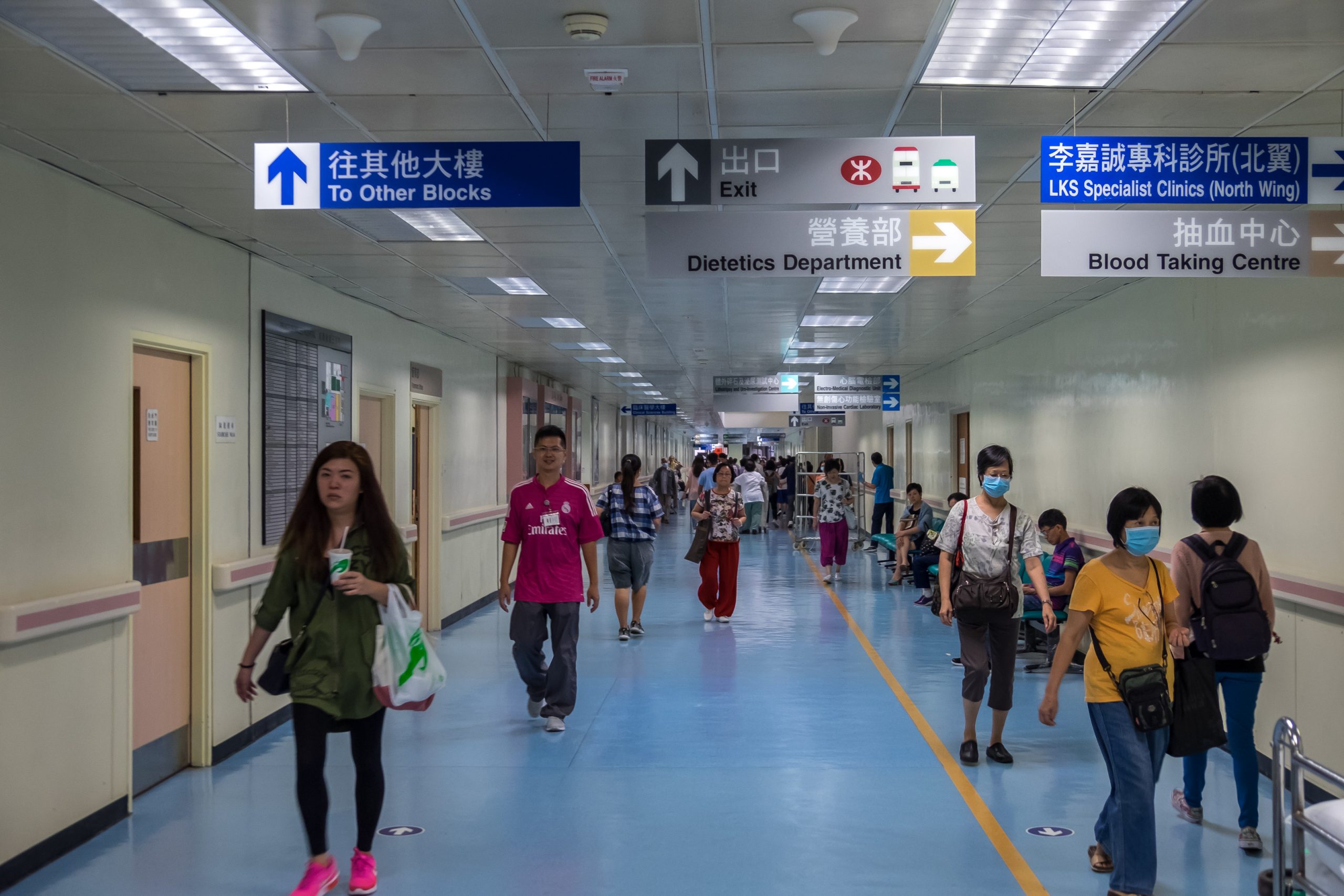
In the People’s Republic of China, reducing the risk of illness-induced poverty entails raising the poor’s financial protection and health system reforms.
Introduction
By achieving near-universal population coverage of social insurance, the People’s Republic of China (PRC) has improved access to and use of health services and reduced the proportion of out-of-pocket (catastrophic) spending. Yet among the country’s poor people, catastrophic health expenses are still high despite the government’s attempt to provide additional financial protection.
The current insurance system should target underprivileged populations to enhance financial protection in the country. Such targeting requires a clear and integrated policy encompassing the basic social health insurance schemes, catastrophic medical insurance, medical aid, and improved healthcare efficiency. To break the vicious cycle of illness-induced poverty and return to poverty because of illness, the protection of poor people from health care costs should be regarded as an important element of poverty alleviation in the PRC. Increased spending on health, however, will not improve financial protection without further measures to increase health system efficiency, strengthen primary care, and reform provider payment systems.
Context
The United Nations Sustainable Development Goals in 2016 committed countries to achieve universal health coverage by 2030 with a focus on essential health services and financial protection. Universal health coverage means that all individuals and communities should get the quality health services they need without incurring financial hardship. It has three dimensions: population coverage, covering all individuals and communities; service coverage, reflecting the comprehensiveness of the services that are covered; and cost coverage, the extent of protection against the direct costs of care.
In 2009, the PRC began implementing comprehensive health system reforms. A major goal of these reforms was to achieve universal health coverage by building a social health insurance system. According to a 2017 monitoring report by the World Health Organization and the World Bank, the PRC had a fairly high score for coverage of essential health services on 16 health indicators but a low score for financial protection to reduce the risk of illness-induced poverty.
This policy brief examines the PRC’s progress in enhancing the financial protection of social health insurance and identifies the main gaps yet to be filled to fully achieve universal health coverage. It is based on a paper by Hai Fang, Karen Eggleston, Kara Hanson, and Ming Wu, published in volume 19 of the journal BMJ.
Policy Solutions
The 2009 health system reforms proposed a universal health insurance system that consisted of three main social health schemes in each locality: Urban Employee Basic Medical Insurance, Urban Resident Basic Medical Insurance, and Rural New Cooperative Medical Scheme, with other supplementary insurance and private insurance. The reforms aimed to cover the entire population with one of the three basic schemes to give them greater financial protection. In 2016 with some heterogeneity by locality, the urban resident and rural schemes merged to form the Urban—Rural Resident Basic Medical Insurance to improve administrative efficiency.
To give added protection to patients with critical illnesses, catastrophic medical insurance (also called critical illness insurance or Da Bing Yi Bao) was initially launched in 2012 and implemented nationally in 2015. It covers patients with critical illnesses whose out-of-pocket expenses are more than the average disposable income per capita in the local area, providing extra reimbursement and removing the benefit ceiling.
The medical aid program (also called medical financial assistance or Yi Liao Jiu Zhu), which was launched in 2003 in rural areas and expanded to urban areas in 2005, provides a further safety net. It was designed to provide medical aid to the poorest people by paying their medical insurance premiums and reducing out-of-pocket expenses after receiving reimbursement from the basic social health insurance schemes and catastrophic medical insurance.
Policy Implementation
The national health reforms of 2009 consolidated a fragmented health insurance system, creating an expanded public health service package that provides basic population health services to all Chinese. Recent mergers of insurance risk pools—such as raising benefit levels of the New Cooperative Medical Scheme to those of the Urban Resident Basic Medical Insurance—and implementation of catastrophic supplementary insurance within local social health insurance systems are encouraging trends for closing gaps in risk protection.
Over the past 2 decades, health spending has grown considerably as the economy experienced unprecedentedly rapid growth. By 2017, the government share of spending represented slightly over 9% of overall government expenditures. The money to invest in the expansion of healthcare came from a mix of central and provincial budgets, with per capita budget allocations that include higher central government subsidies for lower-income provinces. Funding for the medical aid program comes mainly from governments, welfare lotteries, and social donations. Meanwhile, a governance reshuffle consolidated the purchaser role for social health insurance schemes under the newly created National Medical Security Administration, with most other functions assigned to a rechristened National Health Commission.
The PRC also invested a substantial amount of public funds in health services. Government health care budgets financed construction and renovation of government primary care facilities, subsidies to replace provider revenues generated from drug dispensing, purchase of medical equipment for public hospitals, expansion of public health services, and training and continuing medical education.
The increased health spending—directly on healthcare infrastructure and subsidizing social health insurance for the rural and urban non-employee populations—substantially reduces the burden on families. Furthermore, the PRC’s world-leading technological prowess in multiple fields spanning digital commerce to artificial intelligence—and accompanying innovative business models for online consultations that have not yet been fully integrated into the health system—hold promise for supporting higher quality and more convenient health care for the country’s 1.4 billion citizens.
Policy Outcomes
Reforms over the past 2 decades have brought the health care system closer to a level of reliability and accessibility commensurate with the country’s new affluence. The consolidation of the social health insurance system ensured coverage of the entire population for basic health services, contributing to a surge in health care utilization while reducing out-of-pocket costs to patients.
The percentage of people who reported a need for hospital admission but did not receive inpatient care decreased from 29.6% in 2003 to 25.1% in 2008 and 17.1% in 2013. The average number of outpatient visits per capita increased from 1.7 in 2003 to 5.9 in 2017, and the annual inpatient hospital admission rate increased from 3.6% in 2003 to 17.6% in 2017. The use of outpatient services was comparable with the global average, but admission rates were much higher. Furthermore, the government’s investments into the public health system substantially increased the number of health workers and hospital beds and helped keep the prices of health care services low.
The expansion of health insurance coverage reduced the share of out-of-pocket health expenses in total health expenditures from 56% in 2003 to 29% in 2017. It is projected to decrease to 25% by 2030.
Catastrophic medical insurance and medical aid were effective in supplementing the basic social health insurance schemes and provided extra financial protection to a range of vulnerable groups, including people who are poor, chronically ill or disabled, disadvantaged by geographical factors, very young, or frail and old. By 2017, catastrophic medical insurance covered more than a billion people in the PRC and 11 million people received extra benefits of more than ¥30 billion (about $4.3 billion).
The insurance reduced the average proportion of out-of-pocket expenses after reimbursement from basic social health schemes by about 10%. In 2017, through medical aid, 56.2 million people (4% of the population) received subsidies to pay for their social health insurance premiums. For the same year, 35.2 million people (2.5%) received on average ¥757 (around $118.84) or about 12% of average inpatient spending per admission to cover out-of-pocket expenses.
Center for Health Statistics and Information, National Health and Family Planning Commission. 2015. An Analysis Report of National Health Services Survey in China, 2013. China Union Medical University Press.
Central Committee of the Communist Party of China and the State Council. 2009. Opinions on Deepening Health System Reform.
Chinese Ministry of Finance and Ministry of Civil Affairs. 2013. Announcement about Management Methods of Urban Rural Medical Aid Funding. 23 December.
H. Fang et. al. 2019. Enhancing Financial Protection under China’s Social Health Insurance to Achieve Universal Health Coverage. BMJ. 365: l2378.
H. Li and J. Jiang. 2017. Catastrophic Medical Insurance in China. Lancet. 390: 1724–5.

Deputy Director, Shorenstein Asia-Pacific Research Center, Stanford University
This blog is reproduced from Development Asia.
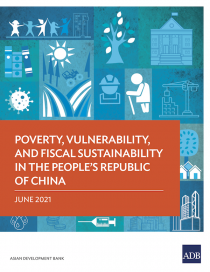
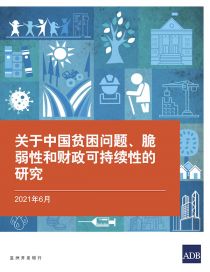


In the People’s Republic of China, a study shows pension income in rural areas improves economic independence and health of older people.
Overview
Establishing sustainable social pension systems in low- and middle-income countries is an urgent task as the growth rate of the senior population in these countries substantially exceeds that of high-income countries (Edmonds et al., 2005). Analysis of the People’s Republic of China’s (PRC) new rural pension scheme, the world’s largest social pension program, offers a robust case study of the impacts of pension benefits on older persons and their extended families in developing countries. In particular, our study examines whether increased income for aging parents relaxes the overall credit constraints for households, especially those in poor rural areas, thereby facilitating more independent living for pensioners and better access to crucial services including medical care.
Analysis
Like many developing countries, the PRC’s population is aging rapidly. By 2050, more than 25.6% of its population is expected to be over the age of 65. Moreover, stringent family planning policies during the last 3 decades have contributed to a dramatic increase in the ratio of relatively low-income senior dependents, further intensifying the pressure on a shrinking working-age population to take care of their parents. Older rural residents living in less developed regions are particularly disadvantaged. In 2010, the poverty rate for rural people aged 60 and above was as high as 22.3%, compared to 7.8% for the rural population in the PRC as a whole (Cai et al., 2012).
The PRC launched the rural pension scheme in 2009 to alleviate some of these pressures and better provide for the basic needs of aging residents. The program now covers almost all counties with over 400 million people enrolled. Considering its scale and the large disparities between rural and urban areas as well as across regions and age cohorts, this pension scheme provides a unique case study of the heterogeneous impacts of pension income.
In analyzing these effects, three questions were asked:
To answer these questions, we examined two detailed household surveys: from Guizhou province, which is one of the poorest areas of rural PRC, and from the relatively well-off Shandong province. In both cases, we tracked each adult child’s living arrangements and demographic information regardless of whether the adult child is counted as a household member. Using both sets of comparative data allowed us to conduct stronger empirical tests.
Taken together, the research design disentangles the effects of pensions from other age-related factors shaping intergenerational relationships, thus contributing to the growing literature on the specific mechanisms underlying impacts of the pension scheme.
Our findings indicate that the pension scheme significantly reduces intergeneration co-residence, promotes pensioners’ consumption of healthcare services, and weakens (but does not supplant) nonpecuniary and pecuniary transfers across three generations. All of these impacts of the pension scheme exhibit far greater magnitudes in the locality with lower income, Guizhou, than the locality with higher income, Shandong.
In looking at intergeneration co-residence, we observed a perceptible reduction in adult sons’ co-residence with parents around the cut-off age for pension receipt, with a larger and more significant effect for Guizhou than for Shandong. Similarly, there is a more salient decline in co-residence between grandchildren and grandparents for Guizhou than for Shandong. Thus, pension income does appear to relax credit constraints most significantly for the poorer rural area and is associated with purchase of greater living space (and privacy) across three generations.
Moreover, the rural pension scheme appears to reduce some nonpecuniary transfers between senior parents and adult children and grandchildren, such as being assisted by children when ill, and to weaken pecuniary transfers between generations. One interpretation for the finding is that pensioners transfer less money to adult children and grandchildren after household division, especially in Guizhou, and that they instead spend the money on hired services. Another interpretation centered in household division is that separation between older people, their adult children, and grandchildren decreases the level of utility from companionship felt, thereby reducing a grandparent’s monetary investment in a grandchild. It could also be the case that parents’ pensions contribute to adult children’s rising migration rate and off-farm employment, thus increasing children’s economic resources and decreasing the demand for transfers from grandparents. In any case, the introduction of pension incomes appears to increase the economic independence of older people.
In addition to these multi-generation impacts, pension receipt is associated with greater healthcare consumption among pensioners or greater perceived confidence in consuming medical services when needed. In rural PRC, despite universal coverage by basic health insurance schemes, financial difficulties often prevent patients from receiving or continuing expensive medical treatments. Our findings suggest that pension benefits may help to alleviate this problem by promoting confidence in ability to pay for necessary medical services, positively impacting both the health and well-being of aging patients in rural areas and allowing family units the option of investing economic funds previously allocated toward the medical needs of senior parents into alternative investments, such as education, additional job training, or relocation.
Policy Implications
Throughout the developing world, adult children often provide the most important form of support for their aging parents, both through pooling of household public goods in co-resident living arrangements and other nonpecuniary support. Pension payments increase older people’s economic resources, which may promote their economic independence and enable adult children to choose to live in a separate home in the same village or to move further away in pursuit of education or work. Our analysis of the PRC’s pension scheme shows that providing pension income to older persons in rural areas may
Our findings help strengthen the rural pension scheme program and thus improve the well-being of older persons and their families across regions in the PRC. They also offer insights into the feasibility of replicating similar schemes in other developing countries that are facing similar demographic challenges.
The complete study is co-authored by Karen Eggleston (Stanford University), Xi Chen (Yale University), and Ang Sun (Central University of Finance and Economics, People’s Republic of China) and is published in the November 2018 issue of The Journal of the Economics of Ageing.
E. Edmonds, K. Mammen, and D.L. Miller. 2005. Rearranging the Family? Income Support and Elderly Living Arrangements in a Low-Income Country.The Journal of Human Resources, 40 (1). pp. 186–207.
F. Cai et al., eds. 2012. The Elderly and Old-age Support in Rural China: Challenges and Prospects. Washington, D.C.: World Bank.
Population Division of the Department of Economic and Social Affairs of the United Nations Secretariat. World Population Prospects: The 2010 Revision.
X. Chen, K. Eggleston, and A. Sun. 2018. The Impact of Social Pensions on Intergenerational Relationships: Comparative Evidence from the People’s Republic of China. Journal of the Economics of Ageing. 12. pp. 225–235.

Deputy Director, Shorenstein Asia-Pacific Research Center, Stanford University
This blog is reproduced from Development Asia.
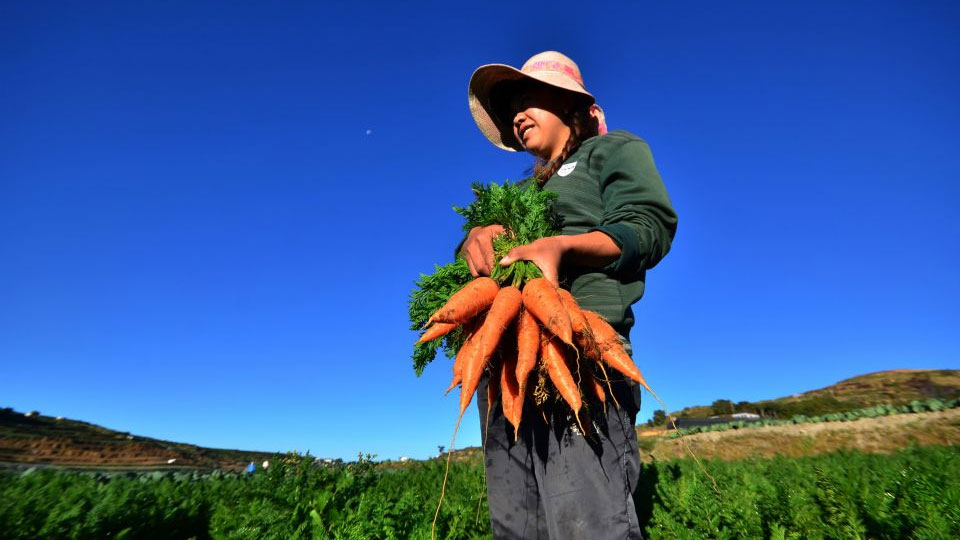
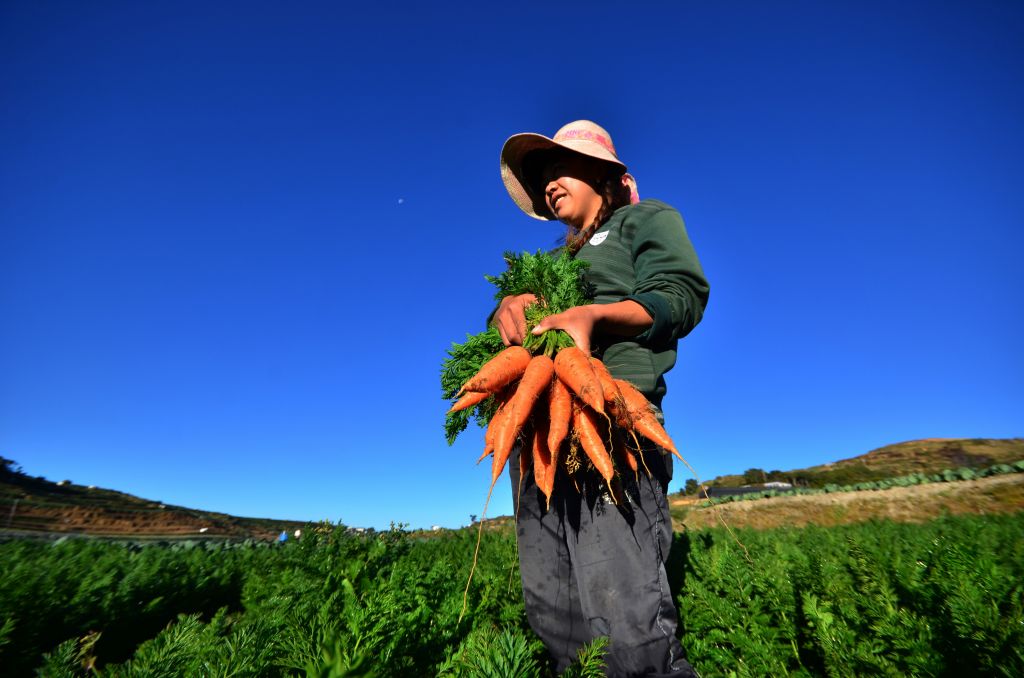
The harsh health and economic impacts of the coronavirus disease (COVID-19) pandemic are being felt across developing Asia. As the region moves toward recovery, agriculture presents a major route to reducing poverty and food insecurity compared to other sectors.
Prior to the pandemic, agriculture accounted for a significant part of the economy for many emerging countries—7.7% in China, 12.7% in Indonesia, 7.3% in Malaysia, 8.8% in the Philippines, 8% in Thailand, and 14% in Vietnam. Since millions of rural migrants lost their jobs in cities and returned to rural homes for their livelihoods, rural development is now becoming vital to post-pandemic recovery. As experiences in Thailand and the Philippines have shown, investments in agriculture can help revive food production and create jobs following a crisis, and enable rural communities to recover.
Productive and sustainable transformation of agri-food systems is a key element in the successful transition from middle- to high-income status. This is always challenging. But as countries push for economic diversification, expand the use of modern technologies, and establish effective management of food supply during this pandemic, many countries in developing Asia are well-equipped to overcome the challenge.
In the past, farmers had few incentives to pursue sustainable agriculture and protect natural assets without incurring significant cost or loss of income. This was because of the disconnection between the retail price of food and the cost of production and distribution reflecting implicit environmental costs.
But now East Asia and developing countries in the Mekong have started introducing natural capital accounting such as gross ecosystem product (GEP) to attach a monetary value to nature, and applying eco-compensation or payments for ecosystems to provide incentives for farmers to change their behavior. These are critical to sustainable transformation of the agricultural value chain, and can be replicated to other regions including central and south Asia.
In February 2021, China unveiled a new government body for the promotion of rural vitalization as the world’s most populous country shifted its policy focus to further enhancing natural capital investment and boosting rural areas. The same week, China’s top leaders outlined priorities and tasks for the next-stage of reform at a key meeting, which stressed efforts to explore a market-based, sustainable way to realize the value of ecological products.
All of these actions are a move in the right direction for a rural recovery, while protecting the environment and natural resources. The wider region could consider how to incorporate similar approaches in their recovery plans.
Looking forward, several opportunities exist to continue the drive toward a more resilient and sustainable recovery in rural Asia.
Agribusiness marketplace. ADB is working with its developing members to establish an agribusiness marketplace on a digital platform. This platform will integrate modern advanced technologies, such as the Internet of Things, artificial intelligence (AI), big data, cloud computing, and blockchain, to digitalize agriculture value chains. This will reinforce food security and strengthen utilization, preservation, and improvement of natural capital. It will also help in solidifying transparency and traceability to improve food safety. At this marketplace, stakeholders of different sizes will have better channels to exchange information, sell products, arrange logistics, obtain financing, participate in training, and acquire third-party services, such as branding, certification, new product design, as well as professional assistance in legal, contracting, accounting and taxation issues.
Sustainable finance. Small and medium-sized enterprises (SMEs), including primary producers, dominate the food system. They are typically at a disadvantage when accessing finance, owing to opacity, under-collateralization, high transaction costs and lack of financial skills. Bank credits are the main source of external capital for SMEs. They need better access to alternative financing, such as equity finance, corporate bonds issuance, and mezzanine finance.
Incentive mechanisms. While there is growth in the adoption of eco-compensation or payments for ecosystem services in rural areas, the current incentive structures still encourage unsustainable short-term behaviors that deplete natural capital. This is a complex area requiring a suitable mix of appropriate “carrots, sticks, and narratives” to change the way that markets work (e.g., sustainable financing and payments for ecosystem services), to enact smart policies and regulations, and to change social norms through information disclosure and education.
ADB has established a working group to expand upon experiences in China and the Mekong subregion through a regional natural capital lab. The lab is designed as a living and virtual platform to incubate, accelerate, and expand natural capital investment, which will prioritize the support for greening of the agriculture value chain in developing Asia. The lab will leverage existing accounting tools to quantify the ecosystem service value of green agricultural value chains, strengthen eco-compensation or payments for ecological services to incentivize behavior change among small farmers, and establish a financial facility to convert ecosystem value or assets into the revenue model of agribusiness.
Our experience during COVID-19 has demonstrated the resilience of agriculture and its enormous value in driving economic recovery. The pandemic has also shown the importance of preserving the harmony among natural assets. Combining these two lessons underlines the need to transform agri-food systems so that they operate in a sustainable way. This transformation can be considerably enhanced by the use of digital technology and eco-compensation mechanisms. ADB’s natural capital lab and the associated financing facility would catalyze much-needed investment to achieve this transformation.

Chief, Rural Development and Food Security (Agriculture) Thematic Group, ADB
This Op-Ed is reproduced from Asian Development Bank.
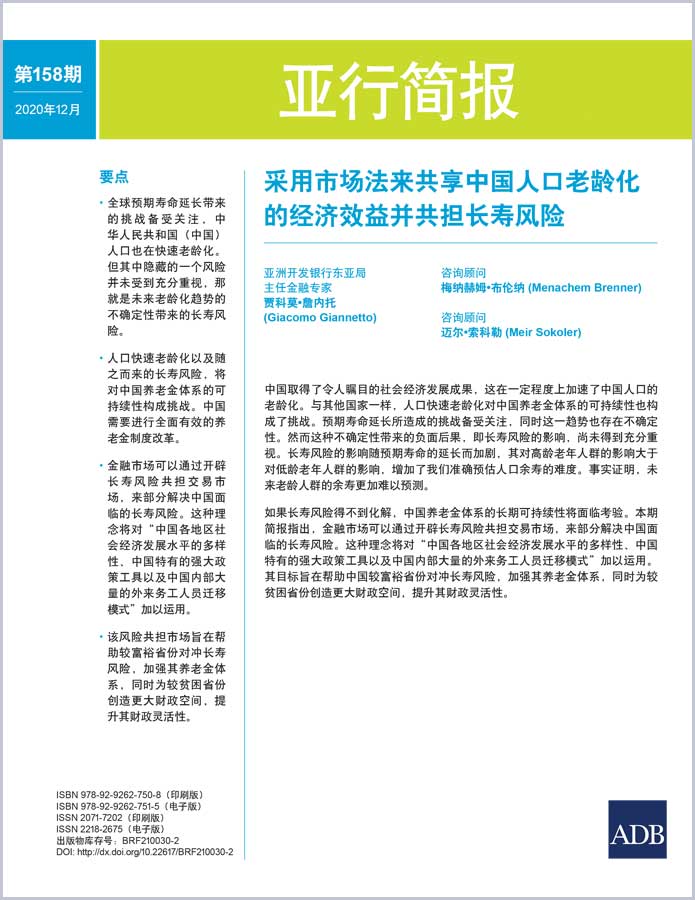
© 2025 Regional Knowledge Sharing Initiative. The views expressed on this website are those of the authors and presenters and do not necessarily reflect the views and policies of the Asian Development Bank (ADB), its Board of Governors, or the governments they represent. ADB does not guarantee the accuracy of the data in any documents and materials posted on this website and accepts no responsibility for any consequence of their use. By making any designation of or reference to a particular territory or geographic area, or by using the term “country” in any documents posted on this website, ADB does not intend to make any judgments as to the legal or other status of any territory or area.
